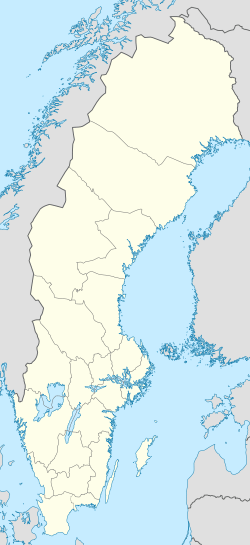Sysslebäck facts for kids
Quick facts for kids
Sysslebäck
|
|
|---|---|

Sysslebäck in October 2010
|
|
| Country | Sweden |
| Province | Värmland |
| County | Värmland County |
| Municipality | Torsby Municipality |
| Area | |
| • Total | 1.50 km2 (0.58 sq mi) |
| Population
(31 December 2010)
|
|
| • Total | 527 |
| • Density | 351/km2 (910/sq mi) |
| Time zone | UTC+1 (CET) |
| • Summer (DST) | UTC+2 (CEST) |
| Climate | Dfc |
Sysslebäck is a small town, also called a locality, located in Sweden. It's found in the Torsby Municipality within Värmland County. In 2010, about 527 people lived there.
Contents
Discover Sysslebäck: A Swedish Locality
Sysslebäck is a charming place in the heart of Värmland, a beautiful province in Sweden. It's known for its natural beauty and peaceful environment.
Where is Sysslebäck Located?
This locality is part of Torsby Municipality, which is a local government area in Sweden. It's in the western part of Värmland County. The county is like a larger region within Sweden.
What is a Locality in Sweden?
In Sweden, a "locality" is a special term for an urban area. It means a place where people live close together, usually with more than 200 residents. Sysslebäck fits this description perfectly.
How Many People Live in Sysslebäck?
According to records from December 31, 2010, Sysslebäck had a population of 527 people. This makes it a smaller community, where everyone might know each other!
What is the Area of Sysslebäck?
The total area of Sysslebäck is about 1.50 square kilometers. This is a fairly small area, which means the population density is around 351 people per square kilometer.
What is the Climate Like in Sysslebäck?
Sysslebäck experiences a subarctic climate. This type of climate, often called Dfc in the Köppen climate classification, means that winters are long, cold, and snowy. Summers are usually short and cool.
How Does the Climate Affect Life?
The subarctic climate influences many things in Sysslebäck. It shapes the types of plants and animals that can live there. It also affects daily life, from what people wear to how they build their homes.
Images for kids



